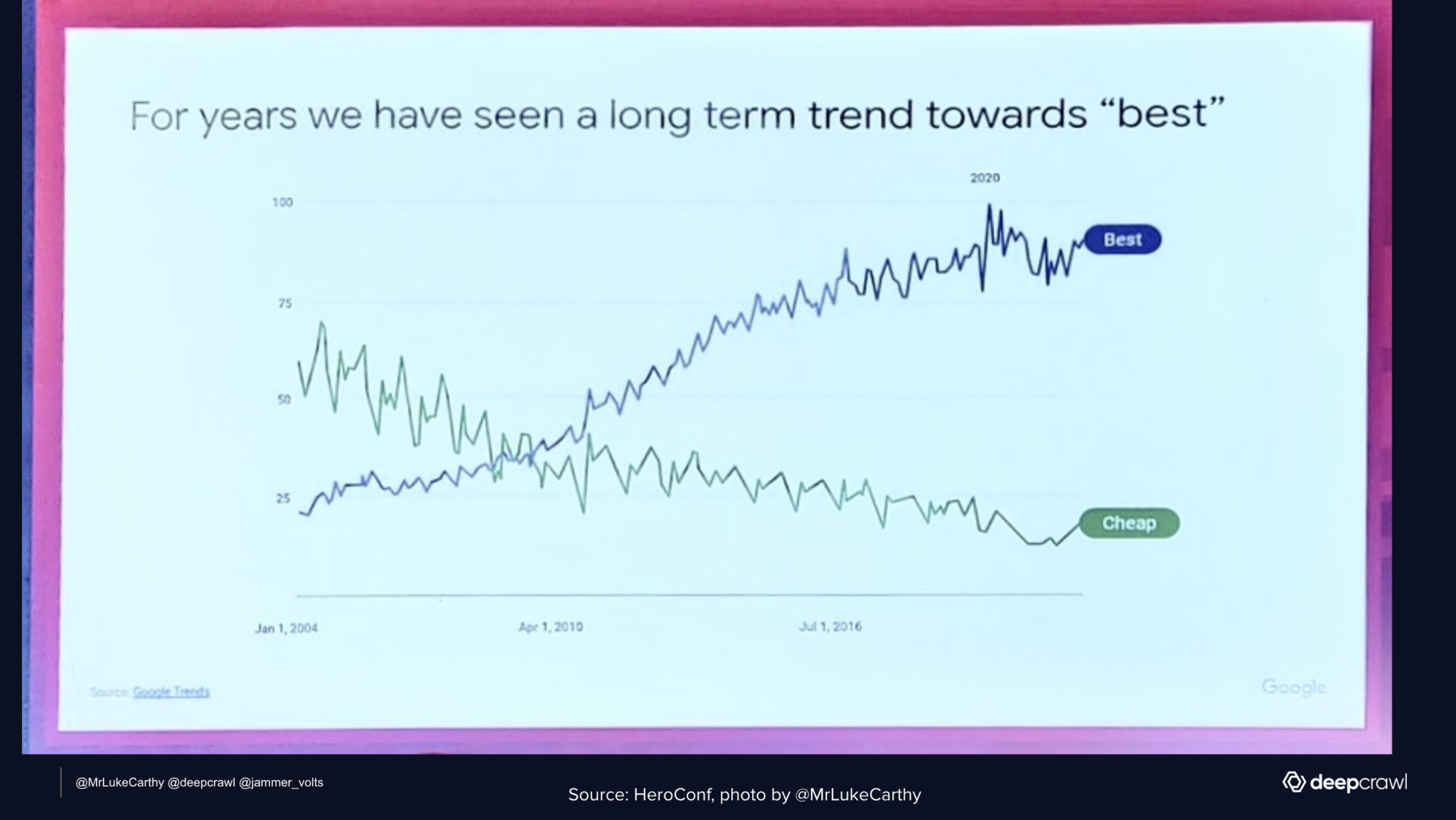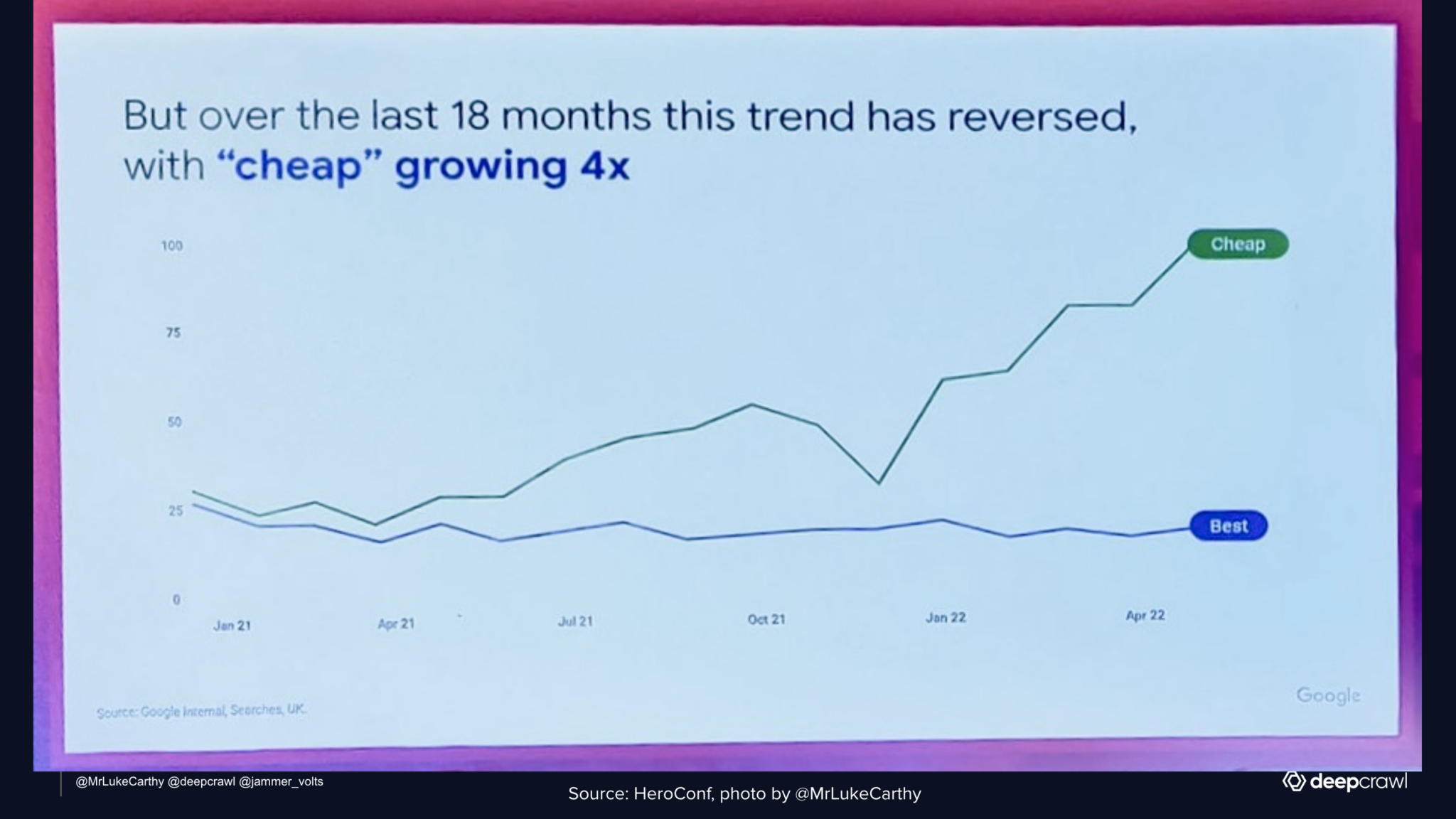In our latest webinar, eCommerce CRO & SEO consultant Luke Carthy discusses the intersection of search engine optimization and conversion rate optimization strategies with Jamie Indigo, a senior technical SEO at Deepcrawl.
Watch the full webinar above (including the Q&A session), or read on for the key takeaways below.
SEO vs CRO: How to balance search & conversion tactics
SEO and CRO are both powerful marketing strategies when it comes to driving sales from your online properties. But sometimes, there can be conflicts between SEO and CRO best practices.
For a prime example, just consider faceted navigation (also known as faceted search). Having robust, multi-faceted internal site search filters on your site is really helpful for users to find the products they want to buy… but it’s also a feature that can introduce duplicate content and URL parameter issues for search engines. Good for CRO, but challenging for SEO.
So how can you balance the needs of both SEO and CRO to reach your larger business goals?
Carthy’s approach is:
Build for the user. Engineer for search engines.
The importance of seasonal testing for conversion and search strategies
As we move into the latter half of the year, most eCommerce businesses will be planning for the holiday promotional season and major sales events like Black Friday.
Carthy warns brands to not get complacent and assume that recycling last year’s strategies will work just as well this year.
“When you get complacent, growth doesn’t happen, you get caught by surprise, revenue starts to erode, you lose out to competitors.”
An example: for years, “best” has been an important search term for eCommerce businesses to consider in their keyword optimization. But more recently, “cheap” has begun to overtake “best” in terms of search engine query volume. Businesses need to stay on top of the most recent trends, changes in user behavior, and best practices — and update their SEO and CRO strategies accordingly if they want to obtain the best results.
eCommerce brands can’t simply copy and paste content from last year. They should run seasonal testing and ensure that the default experience for a first-time user is up to scratch, without overlooking the personalized experience for returning customers.
Tips for successful ‘sales season’ campaigns in eCommerce
Carthy suggests leaving seasonal landing pages live year-round. “It allows you to gauge annual interest,” he says. And for many seasonal campaigns, it’s hard to precisely know when the interest in those sales will start ramping up.
Carthy also sees these seasonal pages as an opportunity to offer users easter eggs, in the form of an out-of-season surprise coupon, or an opportunity for visitors to sign up to be alerted when the new sales go live.
Experimenting with some less intuitive tactics can also provide CRO benefits. For example, adjusting your free delivery thresholds slightly downward from what is stated. If your written policy is to offer free delivery on orders over $100, but you adjust your backend thresholds down to include ‘nearly $100’ amounts like $98 in the free delivery range, “it makes your customers think something is wrong — in the best way possible,” Carthy says. “Your consumers are delighters and they also think they’ve exploited a loophole and need to be quick to buy it now. It’s much better to secure a sale at the $98 than it is to lose that sale over a couple of quid,” he explains.





